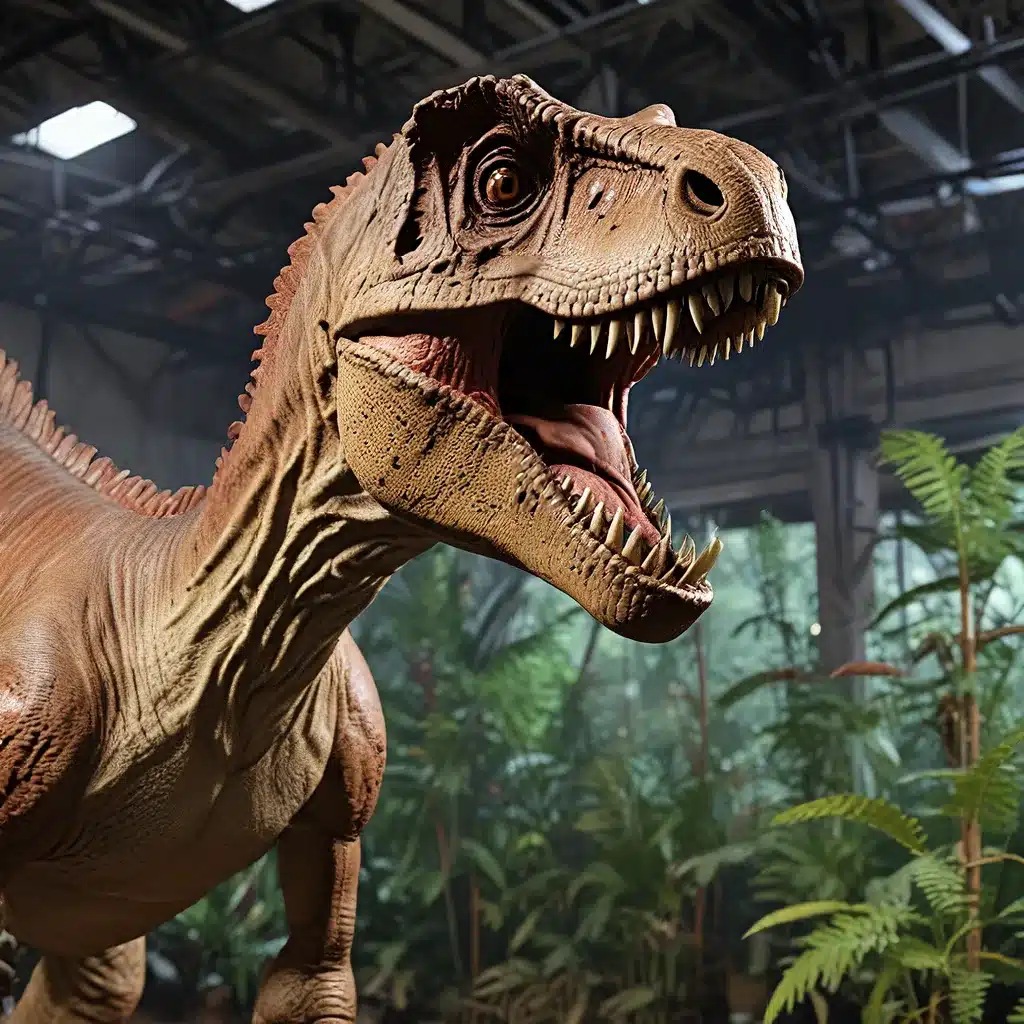
In the world of paleontology and ancient history, the past few decades have witnessed a remarkable transformation, driven by the rapid advancement of technology. From the groundbreaking impact of Jurassic Park to the latest breakthroughs in computer-generated imagery (CGI) and performance capture, the study of dinosaurs and the exploration of long-lost civilizations have been profoundly shaped by these innovative tools.
The Jurassic Park Milestone
The release of Jurassic Park in 1993 marked a pivotal moment in the history of visual effects in film. It was the first time that computer-generated characters interacted seamlessly with human actors on screen, captivating audiences and ushering in a new era of cinematic storytelling. As Adam Bargteil, a professor of computer science and electrical engineering, explains, the film’s use of CGI was a groundbreaking achievement, akin to “the invention of the light bulb or the first telephone call.”
Prior to Jurassic Park, filmmakers had relied on a combination of practical effects, such as physical models and stop-motion animation, to bring their dinosaur visions to life. However, the integration of computer-generated imagery with live-action footage in Jurassic Park pushed the boundaries of what was possible, creating a sense of realism that had never been seen before.
Technological Advancements in CGI
In the decades since Jurassic Park, the field of computer graphics has experienced remarkable progress. Researchers and practitioners have tackled challenges such as simulating cloth, water, crowds, hair, and faces, steadily improving the realism of visual effects.
The evolution of performance capture has also been a game-changer. In the early days, actors had to imagine their interactions with computer-generated characters, while the virtual characters’ movements were recorded separately in a motion capture lab. Today, more advanced performance capture systems allow virtual characters to be interactive on set, providing much richer data to the animators and creating a more seamless blend of the real and the virtual.
These technological advancements have enabled filmmakers to push the boundaries of what’s possible, as evidenced by the carefully crafted visual effects in films like the Lord of the Rings and Hobbit trilogies. Directors like Peter Jackson have skillfully combined virtual and real-world elements, using carefully chosen camera angles and staging to achieve remarkable results.
Implications for Archaeology and Paleontology
The impact of these technological innovations extends far beyond the realm of Hollywood. Archaeologists and paleontologists have embraced the power of CGI and performance capture to revolutionize the way they study and present their findings.
Advanced scanning and 3D modeling techniques have allowed researchers to create highly detailed digital reconstructions of ancient sites, artifacts, and even fossilized remains of long-extinct creatures. These virtual models not only aid in the analysis and preservation of these invaluable historical treasures but also enable immersive experiences for the public, bringing the past to life in unprecedented ways.
Moreover, the integration of augmented reality (AR) and virtual reality (VR) technologies has opened up new avenues for educational and research applications. Archaeologists can now virtually reconstruct entire civilizations, allowing visitors to explore and interact with these ancient worlds, while paleontologists can bring dinosaurs back to life in breathtaking detail, shedding new light on their behavior and evolution.
The Future of Dino Research
As the field of computer graphics continues to evolve and advance, the potential for even more remarkable discoveries and advancements in the study of dinosaurs and ancient civilizations is immense.
Emerging technologies, such as machine learning and artificial intelligence, are being leveraged to automate the analysis of vast amounts of data, enabling researchers to uncover new patterns and insights that were previously hidden. Additionally, the increasing accessibility of high-resolution scanning and 3D printing has made it possible to create physical replicas of fossils and artifacts, allowing for more detailed study and even interactive museum displays.
The future of dino research and ancient history exploration is undoubtedly bright, with technology serving as a powerful tool to unlock the secrets of the past and captivate the imagination of the present. As we continue to push the boundaries of what’s possible, the possibilities for groundbreaking discoveries and immersive experiences are endless.


